Forex Update
By Colin Twiggs
August 10th, 2012 7:30 p.m. ET (9:30 a:m AET)
These extracts from my trading diary are for educational purposes and should not be interpreted as investment or trading advice. Full terms and conditions can be found at Terms of Use.
The Euro retreated after encountering resistance at $1.2400/1.2450. Respect of the rising trendline, however, would confirm that the primary down-trend is losing momentum and a bottom is forming. Recovery above $1.2450 would strengthen the signal. Reversal below $1.2150 would warn of another down-swing — confirmed if primary support at $1.2050 is broken — with a target of $1.185.
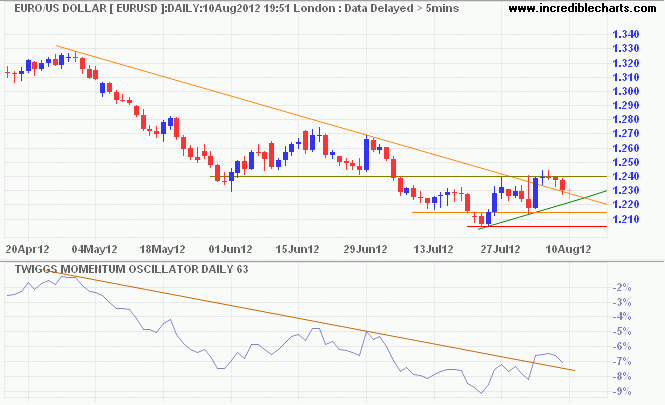
* Target calculation: 1.215 - ( 1.245 - 1.215 ) = 1.185
Pound Sterling's up-trend against the Euro continues on the Weekly chart. Respect of support at €1.255 would indicate an advance to €1.315*. Rising 63-day Twiggs Momentum is evidence of a strong primary up-trend.
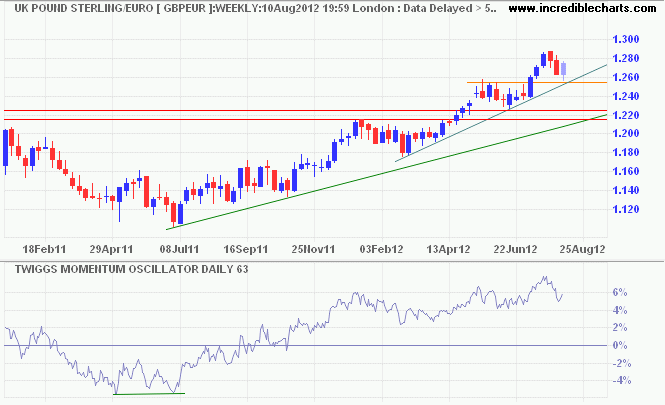
Canada's Loonie broke above parity, headed for a test of resistance against the greenback at $1.02. Long-term bullish divergence on 63-day Twiggs Momentum and recovery above zero suggest a primary up-trend.
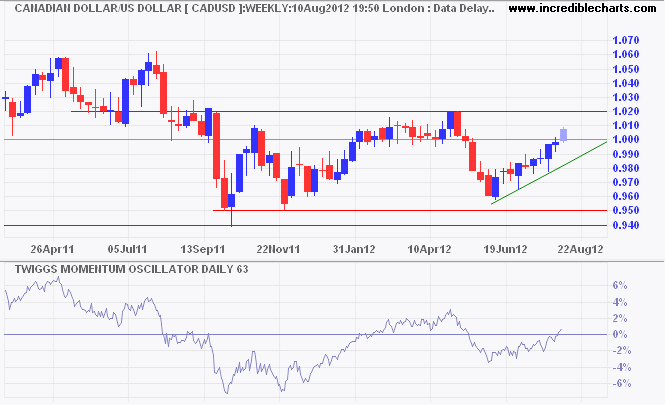
The Aussie Dollar is similarly headed for a test of resistance at $1.08 against the greenback. Breakout would offer a long-term target of $1.20* but calls for RBA intervention to prevent further appreciation are growing. Professor Warwick McKibbin told The Australian Financial Review:
When a portfolio shift into Australian currency is observed, the exchange rate change should be completely offset so the shock only affects the money markets rather than the real economy. If the shock cannot be observed precisely then the central bank should "lean against the wind", that is intervene to slow down the extent of appreciation of the exchange rate.
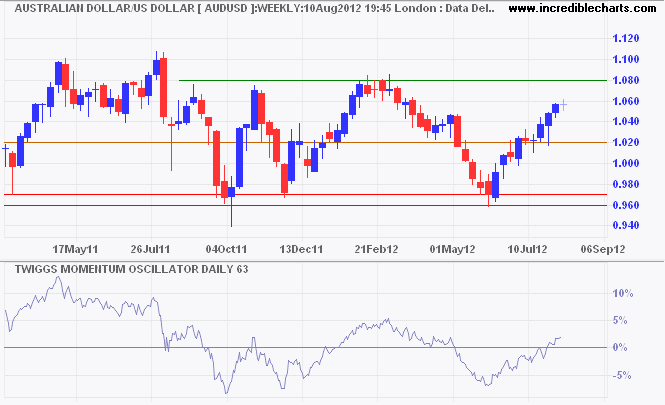
* Target calculation: 1.08 + ( 1.08 - 0.96 ) = 1.20
The Aussie retreated from resistance at R8.75 against the South African Rand and is testing support at R8.50. Failure of support would signal a primary down-trend with an initial target of $8.25*.
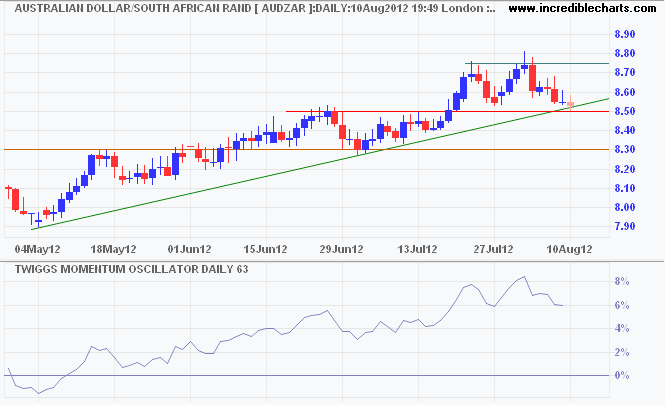
* Target calculation: 8.50 - ( 8.75 - 8.50 ) = 8.25
The Aussie broke medium-term resistance at ¥82.50 against the Japanese Yen, heading for a test of the upper range border at ¥88/¥90. The Australian Dollar/Japanese Yen has been a good reflection of global risk tolerance since 2009, oscillating between ¥72 and ¥90 as risk tolerance rises or falls. Rising 63-Day Twiggs Momentum and recovery above zero suggest a primary up-trend as the Aussie Dollar's status as a reserve currency grows, attracting capital inflows.
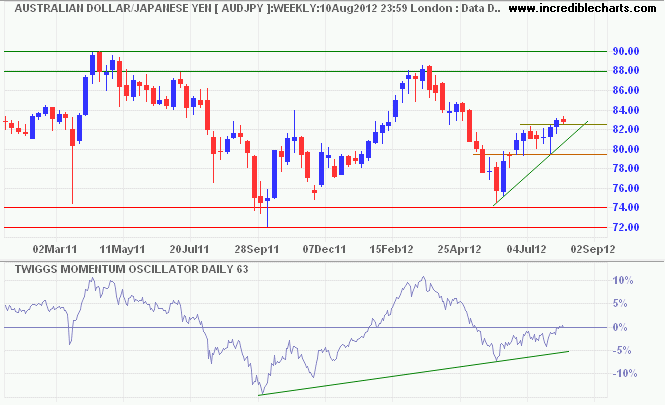
Asia: India recovering but China & Japan bearish
The simple answer to why traders lose is ignorance.
While many analysts argue that psychology is the main reason, I maintain that the deeper answers are gullibility and laziness. It's human laziness that causes traders to look for the line of least resistance.....Unfortunately this can make traders gullible and they start to believe what they read, what they hear, and what they install on their computers..... because [they] desperately want to believe there is a simple path to trading riches.
~ Brent Penfold: The Universal Principles of Successful Trading

Author: Colin Twiggs is a former investment banker with almost 40 years of experience in financial markets. He co-founded Incredible Charts and writes the popular Trading Diary and Patient Investor newsletters.
Using a top-down approach, Colin identifies key macro trends in the global economy before evaluating selected opportunities using a combination of fundamental and technical analysis.
Focusing on interest rates and financial market liquidity as primary drivers of the economic cycle, he warned of the 2008/2009 and 2020 bear markets well ahead of actual events.
He founded PVT Capital (AFSL No. 546090) in May 2023, which offers investment strategy and advice to wholesale clients.
